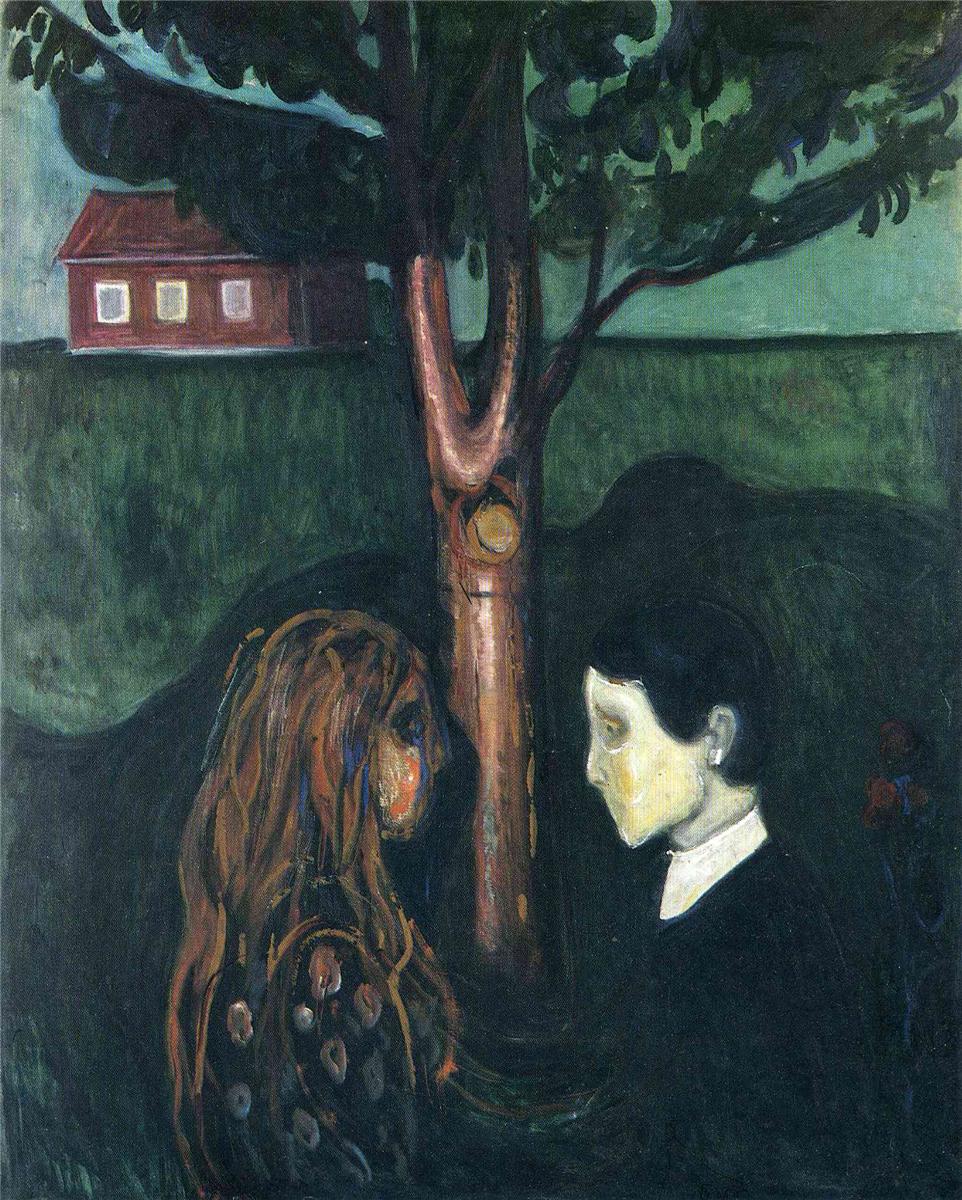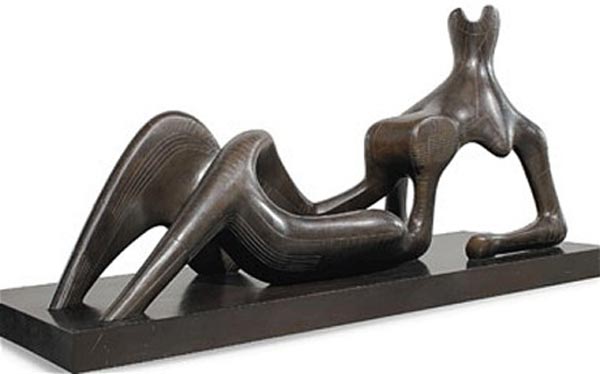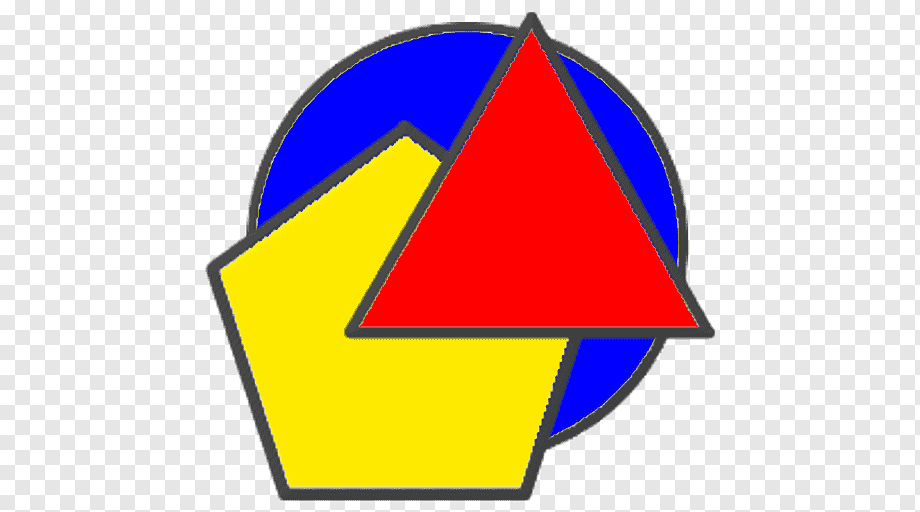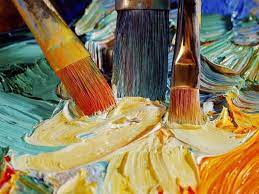What Is Space in Art? Comprehensive Guide
- Contextualizing Space in Art
- What is Space in Art?
- The Effect of Space in Art
- Types and Examples of Space in Art
- Positive Space in Art
- Negative Space in Art — Shapes
- Famous Examples and Clarifications of Space in Art
- Deep and Shallow Space in Art
- Three-Dimensional (3-D) vs. Two-Dimensional (2-D) Space in Art
- Different Techniques in Creating the Illusion of Space in Art
- Focal Point with the Use of Space in Art
- Space in Art: Position and Size
- Space in Art: Overlapping Subjects
- Space in Art: Texture and Perspective
- Space in Art: Color and Value
- Space in Art: Illusion of Perspective
- Space in Art: Illusion of Size
- Detailing Subjects in a Three-dimensional Space in Art
- Conclusion
In art, when we mention "space," we do not always mean outer space with the moon and the stars. You often notice a main subject your eye focuses on in many artworks, but the part around that subject is also crucial. We call "space," an essential element of art.
Below, we'll discuss what it is in detail, its different types, the contrast between "positive" and "negative" space in art, and show how artists use space in various techniques.
Contextualizing Space in Art
Before anything else, it's necessary to understand its context to discuss art and space in greater depth.
There are seven elements of art:
- line,
- color,
- shape,
- texture,
- form,
- value,
- and space.
These components enable artists to make their artworks two-dimensional, such as canvases, or in a three-dimensional form of sculptures and installments.
These elements serve as a checklist for reading an artwork and its composition. Understanding what space means in art helps us see how space and other elements in a piece of artwork together.
What is Space in Art?
In art, space usually means the "place" surrounding, within, or among an artwork. Moreover, as the viewers, we are brought into the action and relate to the art space within or surrounding it.
It may also mean the actual surrounding area that one can walk through, the room, or even within the space where people are free just to come and go.
Next, we'll discuss art space and its different kinds in more detail and show some art examples to explain the ideas we've just mentioned.
The Effect of Space in Art
Famous artists use space in art uniquely to manipulate the viewer's eye to emphasize a specific focal point in their artwork.
Artists may alter space to elicit various emotions in viewers. Imagine having objects near one another — these might make you feel uneasy. Yet, these also give the impression that they belong to each other.
Still, objects that are evenly spaced can instill a feeling of equilibrium. For example, in an Edvard Munch picture, the home in the center draws your eye, and the densely packed woods surrounding it give the impression that the house is safe.

This differs from the faraway empty land, where Munch left more space between things. That shows you how big the landscape is, how alone the house is, and the line between safety and the unknown.
Types and Examples of Space in Art
In the world of art, you can find different kinds of space. You might have come across some of them already.
Famous artists use spaces and other tricks, such as color, brightness, or texture, to make pictures look like they pop out from the canvas, almost like they're real (three-dimensional). This makes the art more interesting.
Also, space in art can make us feel different emotions and set particular atmospheres because of how it's used. These feelings will affect and guide how we engage with and understand the whole piece of art or sculpture – in simple words, how we connect with the space physically, emotionally, and mentally.
Let's explore this further below.
Space can draw the viewer's eye and attention to something important and show them where to look (the artwork's focal point).
Positive Space in Art
In art, think of positive space as your helpful friend. It's all about the important subjects or objects in your artwork. When you intentionally use positive space, you make a strong center that pulls people into your art world. Imagine a portrait where the face, body, and special features stand out. That's a positive space artwork, grabbing people's attention and making it exciting.
To use positive space well, try using bright colors, substantial differences, and changes in light and dark. We'll talk more about tricks for making art look like it has space soon!
A negative and positive space refers to your art's active and quiet parts. Positive space is the active, interesting part that shows the main focal point, and negative space is the quiet, less active part related to the main focal point.
For example, picture an apple drawn on plain, white paper. The apple is positive space – the star of the show, and the white area around it is negative space.
Now, let's check out Negative Space.
Negative Space in Art — Shapes
While positive space takes the spotlight, its counterpart, negative space, has its own unique charm. People often call it "empty" or "void" space, the area around your main subject. Negative space represents the spaces between objects within your artwork.
Although negative space may seem empty, it is a crucial part of your art. As an artist, you understand how important negative space is. It allows the viewer's eyes to rest while contributing to your work's overall balance and harmony. Think of it as a visual pause that complements the positive space.
Just look at the FedEx logo—for instance, notice how a white arrow is formed between the "E" and "X."? This famous design depicts how negative space can add depth and balance to the composition.

Negative space can help you produce comparable visual effects that will leave a lasting impression on your audience. Along with positive space, negative space is a fundamental element in your artistic process.
Now, let's explore some famous examples of space in art!
Famous Examples and Clarifications of Space in Art
In art, space comes in various types — negative, positive, implied, or actual physical space. These are not just simple terms of a certain kind of art. They apply to painting, sculpture, installations, and other types.
One famous example of how positive and negative space can come together in art history can be seen in Henry Moore's sculptures. His artworks play with the spaces that are there and the spaces that are not, making interesting shapes and gaps.

In installations, the spatiality on which art exists is extremely important. Another great example is Chiharu Shiota's installation back in 2015's Japan Pavilion at the Venice Biennale.

Her masterpiece, titled "The Key in the Hand," was carefully put together in the pavilion, and the space itself had a big say in how the final piece looked. She turned the main gallery into a dream through red yarn, keys, and boats. It felt sad but also hopeful and full of promise.
In paintings, implied space sometimes follows depth and perspective rules. However, other times, it's about how abstract shapes are arranged on the canvas.
For instance, look at Paul Klee's abstract art. It doesn't follow the same space rules as realistic art. On the other hand, his playful shapes and objects are arranged to make them seem like they have space, and it's pretty exciting and full of life.
Deep and Shallow Space in Art
Shallow and deep space in art talks about how much "depth" is in a picture plane. When it's deep space, which can also be called three-dimensional space, you've got three parts: the front, middle ground, and back. This helps us see things in the picture that are near and far.
Art expression in deep space can be multifarious. One example is the Renaissance painting by Pietro Perugino, which is known as "Delivery of the Keys" or "Christ Giving the Keys of Kingdom to St. Peter" (1481 – 82). This artwork's depth is excellent because of tricks like using lines, which created hazy distance effects.

Another example is Camille Pissarro's "Avenue de l'Opéra: Morning Sunshine" (1898). The far-away objects are a little blurry in this painting and not quite as clear as the close-up ones. This difference in appearance gives a sense of depth in the painting.

Artists create and often use "shallow space," which is similar to a flat surface and gives a two-dimensional look. It shows things we can see up close. This kind of space in art has width and length but little depth.
Three-Dimensional (3-D) vs. Two-Dimensional (2-D) Space in Art
One can easily differentiate between a three-dimensional space and a two-dimensional space. A two-dimensional space has just two aspects: width and height. On the contrary, the three-dimensional counterpart has three: width, height, and depth.
Two-dimensional spaces in art are often referred to as "flat" or "plane" figures, while we simply call three-dimensional shapes "3D figures."
To differentiate it further, three-dimensional space enables an audience to walk into the physical space and even touch it, which makes it quite engaging. As such, it feels as if you are indeed in the artwork and that it surrounds you.
Meanwhile, the two-dimensional space remains on the paper or canvas, so it may feel distant sometimes.
Although that may be the case in 2D spaces in art, we will discuss several fascinating techniques for making a two-dimensional space appear three-dimensional. You only need to master all seven elements of art!
Different Techniques in Creating the Illusion of Space in Art
It can be quite a challenging process to create a sense of space in a painting; however, it is pretty fun as you make your art.
You've got plenty of tricks to make it happen. It's about where you put things in your art, how they pile up, the colors you pick, the dance between light and dark, making stuff seem near or far, and adding those tiny special touches to your subjects.
Once you have grasped these methods, it creates an illusion that your workpiece has depth and space.
Focal Point with the Use of Space in Art
In art, a big deal is the main part we look at — the focal point. It's what grabs our attention in a picture. This could be a person, an object, or something else in the artwork.
For instance, in Edward Hopper's painting 'Nighthawks,' the brightly lit room and the three people in it catch your eye. The background, like the buildings and the street, is quieter in color, like white space, making the figures inside stand out even more.

Sometimes, artists use the space around the focal point to make us look at it. They use clever artistic styles like making it stand out by contrast or balance.
For example, they might leave more space around the special thing to make it really pop. When they create empty areas around it, they ensure we notice it without getting distracted by other stuff in the picture.
Space in Art: Position and Size
The way you put things in your picture, which we also call placement, can be linked to their size. When you put something down in the lower part or right at the front, it looks bigger than the stuff you put up in the upper part, middle ground, or back. This makes it seem like there's depth in your artwork.
And here's the fun part — there are several techniques to play with where you put things and how big or small they are in your artwork.
Space in Art: Overlapping Subjects
Imagine in your artwork when things overlap, meaning one thing is in front of another. The objects in the front seem closer to us, and the thing behind looks farther away. When you do this, it gives your art an excellent perspective.
The term "overlapping" in art refers to when your work is seen as if looking at things from a different point of view and giving it life. With some practice, overlapping things in your painting can add an air of adventure that onlookers will enjoy.

It's sort of an invitation to get closer and find out more. You are effectively turning your art into a story and adding an element of shock to your painting.
Here's a quick example — say you're making a painting of a pretty forest. The big tree is just in front of you, while an extremely winding track stretches behind it.
Now, if you let the branches and leaves of the tree in front cover some of the paths, it looks like a lot of space in your landscape painting.
The tree's branches and leaves are like the positive space in art, and the gaps between them are like the negative space. Playing with them makes your picture seem like it goes on for a long time, making people want to explore the forest.
So, using overlapping stuff in your art can make your landscape painting feel strong and tell a remarkable story. It's like they're adding their very own open space to your landscape painting.
Space in Art: Texture and Perspective
Often, artists create illusions, making their art appear three-dimensional.
The use of linear perspective, three-dimensionality, and a vanishing point will actually make your own artwork resemble a three–dimensional space. This trick helps you demonstrate the size of things.
This further helps artists to portray size in images or pictures. Near things look bigger than objects that are quite far away.
When you combine these tricks, your artwork can take people to a space that seems to go on forever. It adds thrills to the artwork and gives a more immersive experience.
Space in Art: Color and Value
You can also try using color and shading techniques, which will give the impression of realism or depth in your artwork. A splendid illustration of this is the skillful utilization of lighter tones and shadows to create an effect of spatial depth.

Another clever approach involves using less intricate colors for the background space while putting elaborate details only for the foreground items. This makes your masterpiece feel like it has lots of depth.
Space in Art: Illusion of Perspective
There are several ways artists can make their artwork look three-dimensional. For instance, paintings such as "Christ Giving the Keys of the Kingdom to St. Peter" apply an atmosphere and linear perspective.
Famous examples like "The School of Athens" by Raphael and "The Last Supper" by Leonardo da Vinci use converging lines at essential points. It's like they're pulling the viewer's eye into the picture.

Another trick is called foreshortening. It makes things look far off in the distance. For instance, Andrea Mantegna's "Lamentation Over the Dead Christ" depicts Jesus as appearing short to bring out the sense of deep space.

These various techniques also make you feel more when you look at the picture plane, like you're part of the scene. By using things like foreshortening, a linear perspective, and vanishing points, artists can make it look like there's depth in their masterpiece.
Artists use lots of tricks to make their artwork look like it has depth or just flat two-dimensional art.
Space in Art: Illusion of Size
Artists can have some fun with size to make objects seem big or small in their art, making it interesting.
Sizes are important elements of art because they let the artist decide how we see the overall composition (shallow or deep space) in their artwork.
Leonardo da Vinci had it down pat! He cleverly used deep space to show us how big his artwork was.

Today's artists do it, too. By using point perspective tricks that make objects look closer or further away to show how big things are.
Artists like Leonardo da Vinci skillfully manipulate your perception, almost like a visual game, to convey the size and space within their artwork.
Detailing Subjects in a Three-dimensional Space in Art
Enhancing the details of your subjects or objects brings them nearer to the viewer's eye.
Conversely, simplifying and reducing details makes them appear distant. This technique grants you the creative freedom to manipulate the sense of depth in your composition!
Conclusion
Grasping how artists play with space in their art helps us decode the messages they convey in their creations.
Whether you're a practicing artist or an enthusiastic art lover, this understanding of the importance of space in art enhances your appreciation for this fundamental element. Moreover, it empowers you to create more captivating compositions in your artwork.
Artists use different methods in the effective manipulation of space in art. It provides a flexible tool to create powerful and forceful works.
A short trip into art history reminds us how many artists have used space at different times and is equally valid for present-day works.
Experiment with different ideas about space — you might be surprised by how far your work can go.
No Comments Yet...